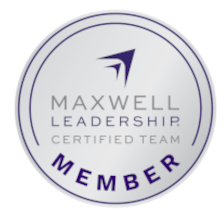
Elevate Your Resume: The Power of Storytelling
Key Insights
- A narrative perspective enhances resume creation by personal branding and by effectively highlighting transferable skills and accomplishments.
- Adds vitality to resumes, transforming them from basic documents to engaging career stories appealing to recruiters and hiring managers.
- Helps solidify personal brand and make a lasting impression.
- Integrates personal and career goals for a more complete view of achievements and future potential.
- Reflects both past experiences and outlines future career aspirations.

Narratives are a strong medium for expressing who you are and what value you offer potential employers. They transform your resume from a simple catalog of duties into a cohesive story that illustrates your career path or personal brand, challenges, triumphs, and development.
This storytelling approach enables hiring managers to understand your career’s broader context and envision how you can contribute to their organization. It also helps to articulate your skills and professional experience more effectively.
This Article Contains
Why Narrative Matters
In today’s competative employment landscape, distinguishing yourself from qualified applicants is no easy feat. While many candidates prioritize showcasing their technical abilities and career milestones, a helpful method to gain perspective on your career, skills, and professional experience that can elevate your resume remains overlooked: powerful narrative.
Narratives in resumes are pivotal because they provide a window into your personality and what makes you the unique candidate for the job. Crafting a narrative showcases not just your skills and achievements, but also your journey and the value you bring to the potential employer
"Storytelling reveals meaning without committing the error of defining it."
Hannah Arendt
Steps to Develop Your Narrative
1. Understand Your Character
Every compelling tale features a protagonist with defined characteristics and ambitions. Reflect on your professional identity: What strengths set you apart? What motivates you? How have your experiences guided your career objectives? Understanding this will ensure a consistent and engaging narrative (or brand) throughout your resume.

2. Establish the Context
Each position you’ve held serves as a chapter in your story. Rather than just listing your roles, establish the context by detailing the environment. What were the objectives or challenges faced by the company when you joined? How have you met those objectives and challenges? This setting will illuminate your contributions and accomplishments more vividly.
3. Emphasize Your Path
Frame your career development as a voyage of learning and evolution. In every position, share your accomplishments and reflect on the obstacles you navigated and your responses to them. What was the outcome of each of each accomplishment? This narrative highlights your problem-solving prowess and the results you contributed to the story or company.
Changing careers is more than just a professional shift; it’s a significant life event that requires careful navigation to maintain mental health. By embracing your emotions, preparing thoroughly, and ensuring that you have the necessary support, you transform this daunting prospect into an exciting opportunity for growth. Remember, the goal is not just to succeed in a new career but to thrive in it—mentally, emotionally, and professionally..

4. Illustrate - Just Don't State
The key principle in storytelling is to illustrate rather than simply state. Use specific examples to demonstrate your successes. Instead of claiming you’re a “team player,” recount an instance where you successfully collaborated across teams to finalize a project ahead of schedule. Whenever possible, quantify your achievements with data, as this can vividly animate your narrative.
5. Wrap Up with Your Aspirations
Like any great story, your resume deserves a powerful conclusion. Here, you should connect your past experiences to the prospective position. What prepared you for this new opportunity? What unique insights do you possess? This brings your narrative full circle, showcasing how your work history equips you for future contributions at the targeted position and company.
Application
Start with Reflection
Exercise: Dedicate time for introspection. Write down your career goals, notable achievements, challenges, and how you overcame them. This exercise will help you identify your career’s key themes and stories.
Tip: Use mind mapping or a similar visual technique to organize your thoughts and identify connections between different parts of your career story.
Construct Your Story Framework
Exercise: Create an outline for your resume story, structuring it with a clear beginning (where you started), middle (key milestones and challenges), and end (where you are now and where you aspire to be).
Tip: Think of your career as a hero’s journey. Identify moments of struggle, learning, and triumph. This narrative structure resonates deeply with human psychology and can make your resume more engaging.
We would love to help you rewrite your story, Schedule a a free session today.







